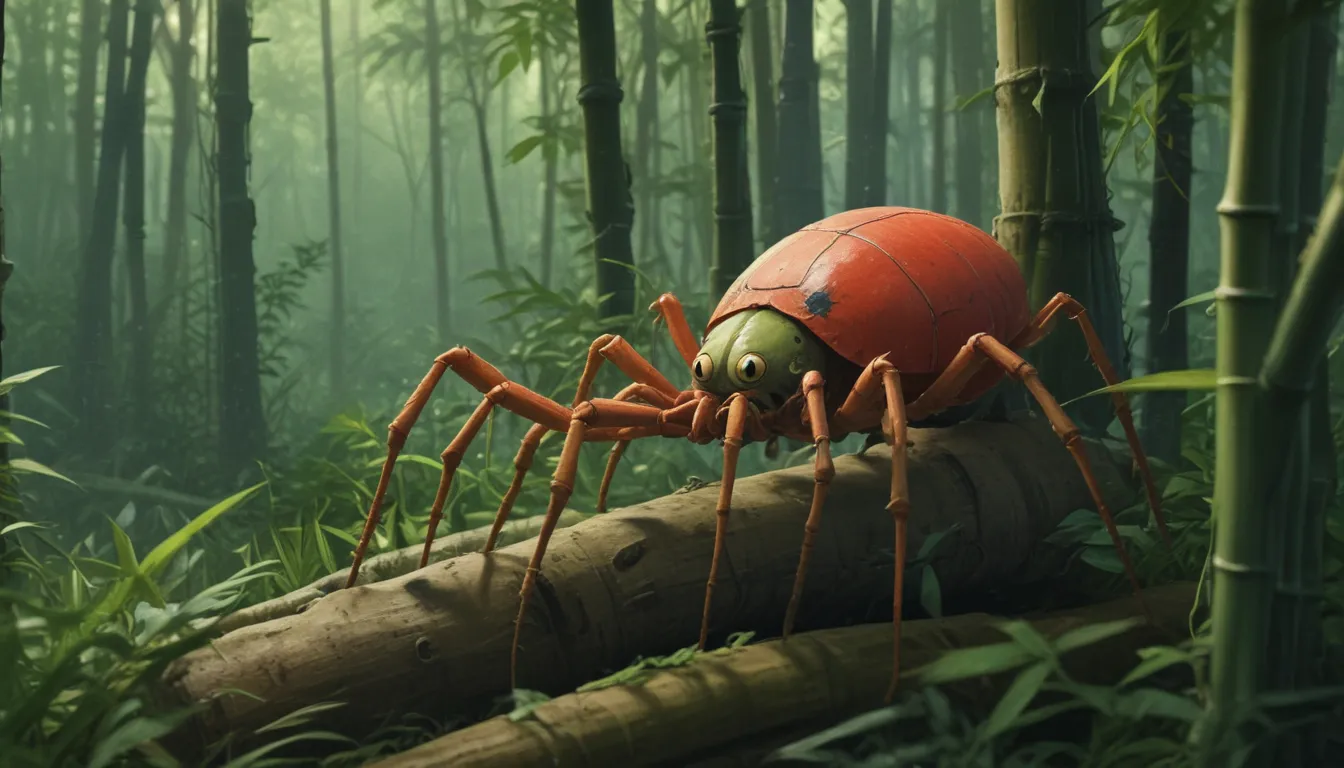Everything You Need to Know About Bamboo Spider Mites

Are you a proud bamboo grower looking to keep your plants healthy and vibrant? Then you may need to be on the lookout for bamboo spider mites. These tiny creatures may cause damage to your plants by sucking the sap out of them.
In this article, we will dive deep into the world of bamboo spider mites. From identifying them to controlling infestations, we will cover all the necessary information you need to protect your bamboo plants.
Understanding Bamboo Spider Mites
Bamboo spider mites are small pests that can cause significant damage despite their size. They measure less than 0.04 inches long but can compromise the ornamental value of your plants. These pests thrive in warm, dry conditions and are most likely to infest plants that lack water and contain excess nitrogen.
It is crucial to be aware of the different mite species that feed on bamboo. In particular, the Tarsonemidae, Eriophyidae, and Tetranychidae families are known to cause the most damage to bamboo plants. Stigmeopsis spider mites, a genus within the Tetranychidae family, are particularly destructive to bamboo.
Identifying Bamboo Spider Mites
Identifying bamboo spider mites is crucial in managing infestations effectively. These mites have a flattened pale yellow to greenish-yellow body with greenish-black spots. They reside on the undersides of leaves, often beneath white webbing. You may also notice black excreta near the webbed nests.
Signs of an infestation include pale yellow stippling or blotches on leaf surfaces and white webbing below. As the mites feed on the plant, the tips and edges of the leaves may turn brown, eventually leading to leaf drop. Severe infestations can compromise the ornamental value of your plants and potentially lead to plant death.
Understanding the Biology and Life Cycle
In warm climates, spider mites remain active year-round. However, in cooler climates, they enter a semi-dormant state called diapause during the winter. Female mites turn red during this period, a color that signals danger in nature.
Once spring arrives, spider mites reemerge and colonize host plants. They feed, mate, and lay eggs, covering the undersides of leaves with webbing. Multiple generations per growing season contribute to the rapid population growth of these pests.
Organic Control Methods
When dealing with a bamboo spider mite infestation, there are various organic control methods you can consider. These methods are effective in managing infestations without the use of harsh chemicals. Here are some approaches you can take:
Cultural Controls
- Purchase plants from reputable nurseries to avoid introducing pests.
- Maintain healthy soil with medium moisture levels and avoid excessive nitrogen.
- Use a slow-release, well-balanced fertilizer suitable for your plants.
Physical Controls
- If propagating bamboo, consider treating dormant rhizomes in hot water before planting.
- Use a strong stream of water to wash affected foliage and remove mites.
Biological Controls
- Apply neem oil to the affected plants.
- Introduce predatory insects like Neoseiulus fallacis to feed on spider mites.
Organic Pesticides
In cases where cultural and biological controls are insufficient, you may consider using organic pesticides. These products provide an effective yet environmentally friendly solution to combat infestations. Here are some options you can explore:
- Insecticidal soap: Contains fatty acid salts effective against spider mites.
- Pyrethrin spray: Derived from chrysanthemum flowers, offers natural pest control.
Chemical Pesticide Control
For severe infestations that cannot be controlled organically, chemical pesticides may be necessary. It is essential to exercise caution when using chemical miticides, as they can be toxic and harmful to the environment. Floramite is one product registered for use against bamboo spider mites.
Best Practices for Preventing Infestations
As a bamboo grower, it’s essential to implement best practices to prevent infestations and keep your plants healthy. Here are some tips to help you maintain thriving bamboo plants:
- Source plants from reputable nurseries.
- Provide optimal growing conditions, including rich soil and proper watering.
- Monitor your plants regularly for signs of infestations and take prompt action when needed.
By following these best practices and being vigilant, you can keep your bamboo plants healthy and free from spider mites. Remember that healthy plants are less vulnerable to pests and diseases, so prioritize plant care to prevent future infestations.
If you have experience dealing with bamboo spider mites or want to share additional tips, feel free to leave a comment below.
For more information on caring for bamboo, check out our recommended articles on clumping vs. running bamboo and how to divide and transplant bamboo.
In conclusion, protecting your bamboo plants from spider mite infestations is essential for maintaining their health and beauty. By learning to identify these pests and implementing effective control methods, you can safeguard your plants and enjoy their lush greenery for years to come. Remember to prioritize plant care and follow best practices to prevent infestations and keep your bamboo thriving.





